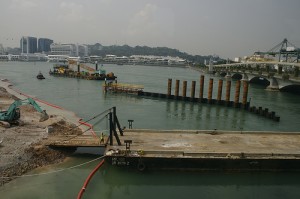As mentioned previously, the Singapore government has several more land reclamation plans to expand the area. These plans would be the site for over 700 000 more residential units spread across the island. At the rate of growth of the Singaporean population, future land reclamation plans cannot be completely eliminated. However, I believe that plans can be put in place to ensure that nature is not sacrificed for the sake of development.
The Singapore government has put several measures in place to ensure that land reclamation does not greatly impact the environment. To prevent further loss of mangrove forests in Singapore, the Sungei Buloh Wetland Reserve was set up to preserve the forests there and allow migratory birds to settle.
Another measure would be the placement of sediment screens at land reclamation sites to ensure that the landfill does not get eroded and release sediments into the waters. However, the screens are only effective in keeping large particle sediments out. Smaller particles of land are still able to pass through these screens. Nevertheless, this is a step in the right direction to ensure a reduced amount of sedimentation that happens in the waters.
Sediment screens used at the Sentose Integrated Resort land reclamation site
Image taken from: http://leafmonkey.blogspot.sg/2008/01/eia-of-sentosa-integrated-resort.html
However, more can still be done to preserve the biodiversity of the region. As this topic is considered a relatively new area of interest, more research can also look into more species that have been affected since the start of land reclamation in Singapore. With this information, the government and related agencies would be able to develop plans to help ensure the continual survival of the affected organisms. Alternatives to land reclamation, such as building more high-rise buildings to accommodate more people or more optimal plans for land use, can also be adopted.

